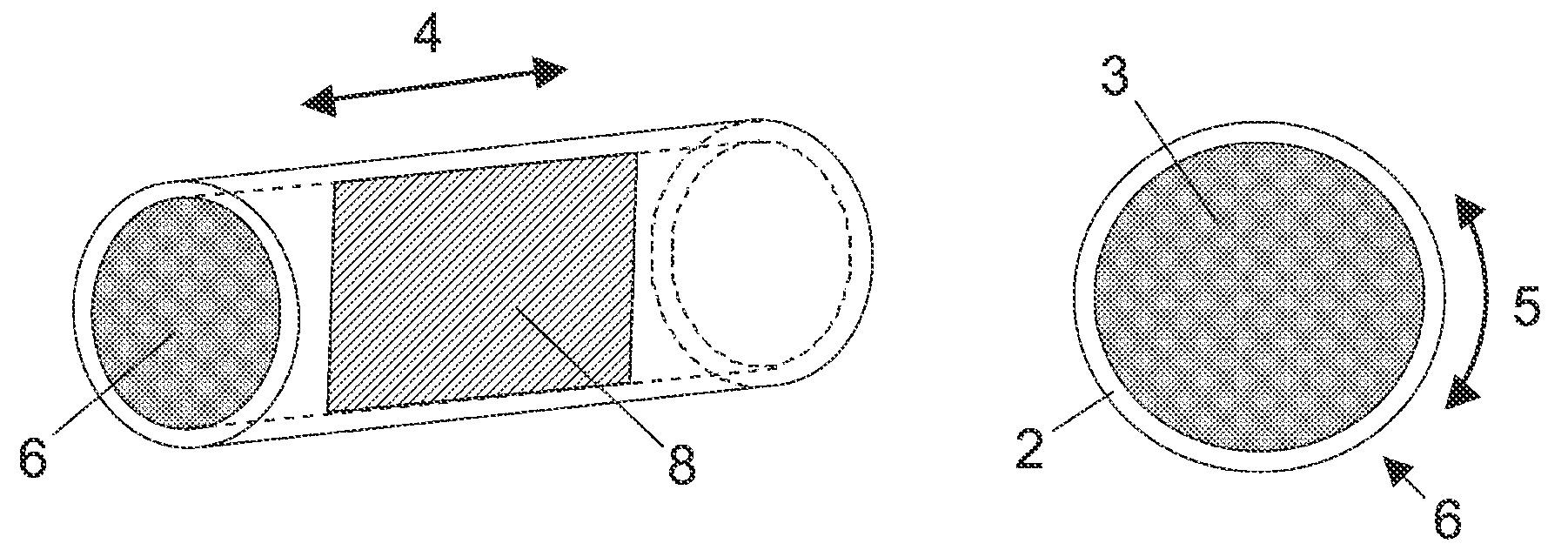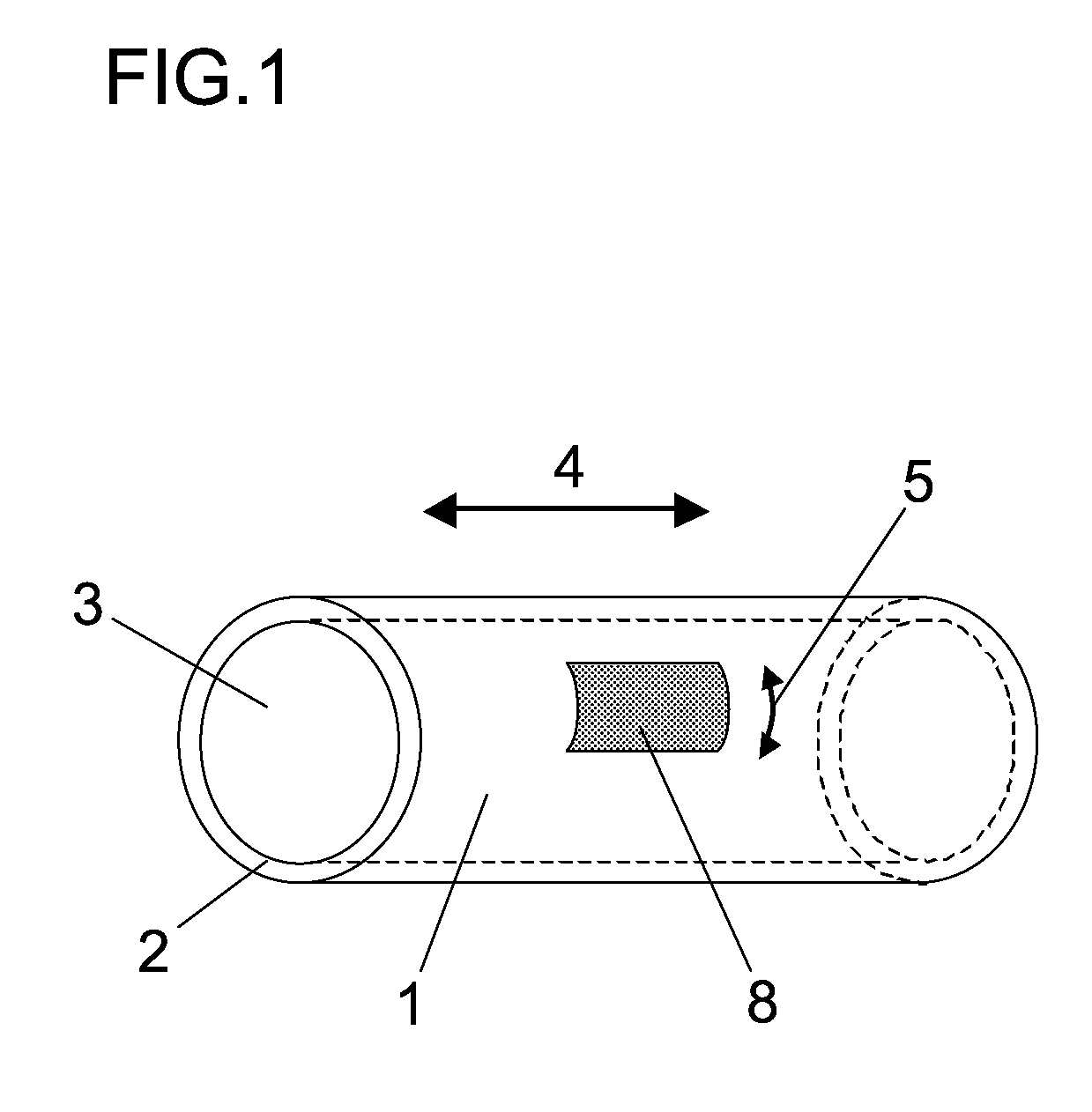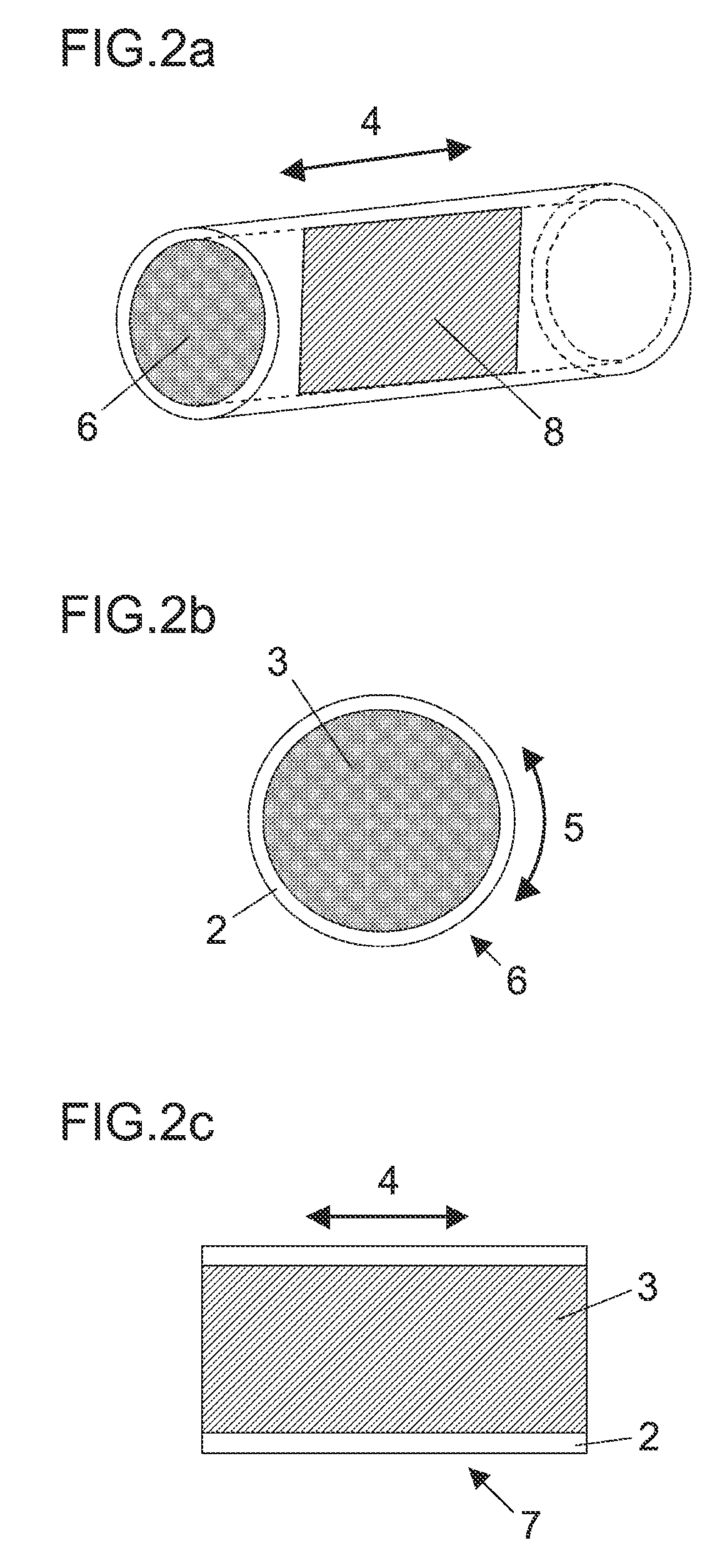Bonding wire for semiconductor device
a technology for bonding wires and semiconductor devices, applied in the direction of connection contact material, conductors, soldering apparatus, etc., can solve the problems of difficult to comprehensively satisfy the various properties required for bonding wires, reducing bonding strength, and reducing the stability of bonding wires, so as to reduce the effect of reducing the risk of spring failur
- Summary
- Abstract
- Description
- Claims
- Application Information
AI Technical Summary
Benefits of technology
Problems solved by technology
Method used
Image
Examples
examples
[0099]Examples will be explained below.
[0100]Regarding the raw materials for a bonding wire, high-purity materials for Cu, Au, and Ag with a purity of approximately 99.99% by mass or greater were used for the core material, and materials of Au, Pt, Pd, Ru, Rh, and Ag with a purity of 99.9% by mass or greater were used for the skin layer or the intermediate metal layer.
[0101]To use a thinned wire to a certain diameter as the core material and to form a layer of a different metal on the surface of the wire, an electroplating, electroless plating, evaporation, or melting method was carried out and then, heat treatment was performed. As the electroplating solution and electroless plating solution, commercially available plating solutions for semiconductor technologies were used, and sputtering was used as the evaporation method. A wire having a diameter of approximately 25 to 1500 μm was prepared in advance and a coating was applied on the surface of the wire by evaporation, plating, or...
PUM
| Property | Measurement | Unit |
|---|---|---|
| size | aaaaa | aaaaa |
| size | aaaaa | aaaaa |
| thickness | aaaaa | aaaaa |
Abstract
Description
Claims
Application Information
 Login to View More
Login to View More - R&D
- Intellectual Property
- Life Sciences
- Materials
- Tech Scout
- Unparalleled Data Quality
- Higher Quality Content
- 60% Fewer Hallucinations
Browse by: Latest US Patents, China's latest patents, Technical Efficacy Thesaurus, Application Domain, Technology Topic, Popular Technical Reports.
© 2025 PatSnap. All rights reserved.Legal|Privacy policy|Modern Slavery Act Transparency Statement|Sitemap|About US| Contact US: help@patsnap.com



